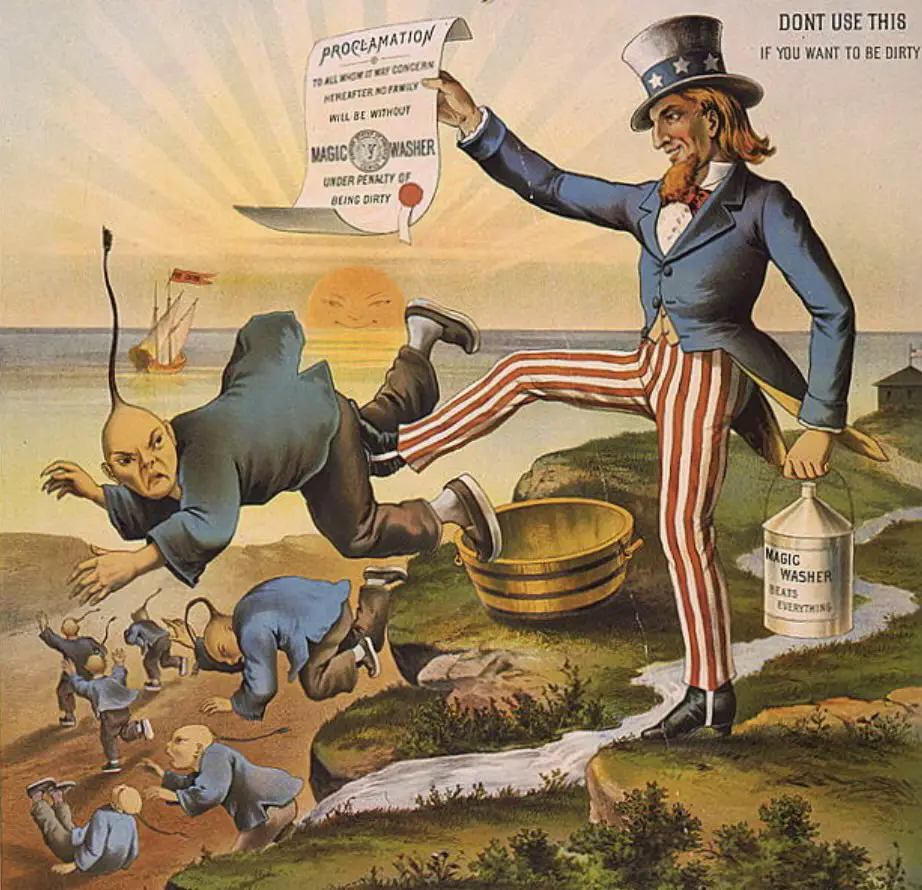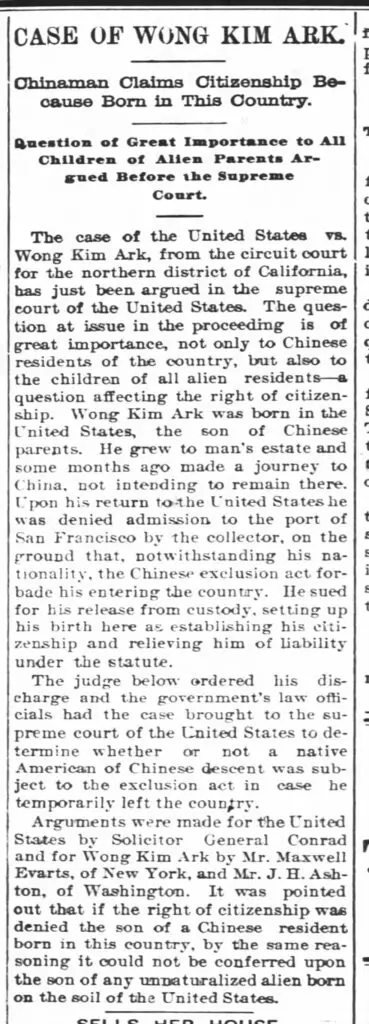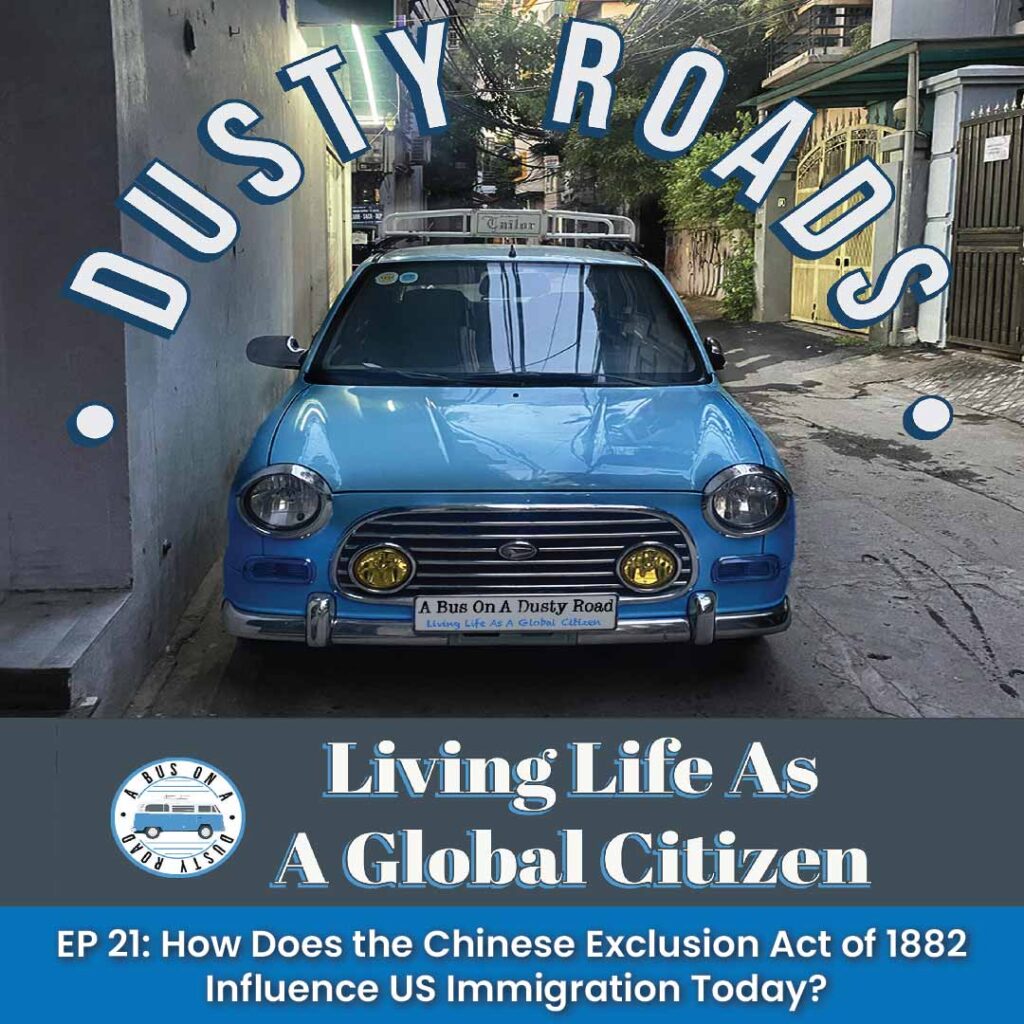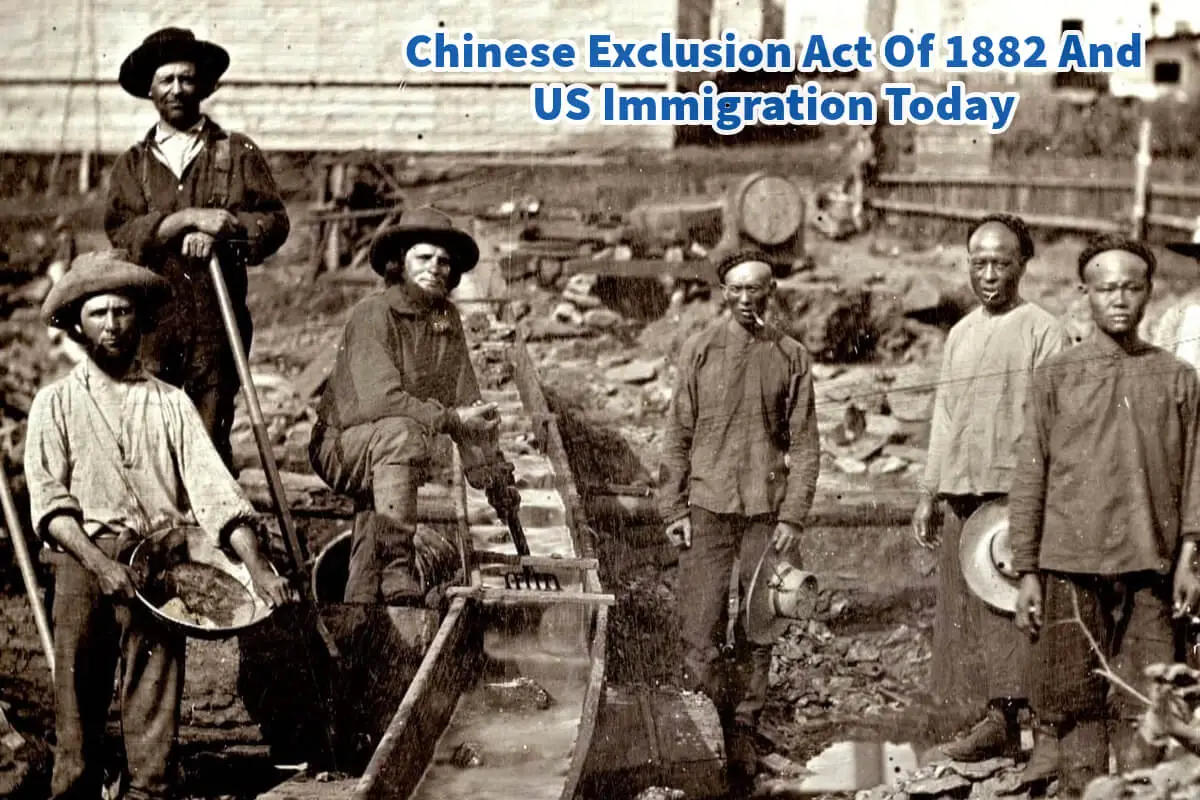One of the most hotly debated topics in the United States today is immigration. Many Americans believe the country needs stricter immigration controls and fewer open borders.
Having spent most of my adult life living and working in other countries, I understand the complexities and challenges of immigration. In many countries, it is not easy to stay, especially illegally. You must review the proper documentation and meet specific requirements to reside in a foreign country legally. This context makes exploring the Chinese Exclusion Act of 1882 attractive and what it could mean for immigration today.
Table of Contents
- What Is The Chinese Exclusion Act Of 1882?
- The Chinese Exclusion Act: Historical Relevance Today
- Related Questions
What Is The Chinese Exclusion Act Of 1882?
The Chinese Exclusion Act of 1882 was a landmark piece of legislation in the United States. It was the first significant law to restrict immigration based on nationality.
This act specifically targeted Chinese laborers and had far-reaching implications for immigration policy and the treatment of Asian immigrants in the United States. Understanding the Chinese Exclusion Act is essential to grasp the historical context of current immigration debates.
As this act specifically targeted Chinese nationals, many would consider the act as a racially motivated law that specifically excluded one group of people.

Background And Context Of The Chinese Exclusion Act Of 1882
In the mid-19th century, the United States saw a significant influx of Chinese immigrants, particularly to the West Coast. Many Chinese immigrants came to the U.S. seeking economic opportunities, particularly during the California Gold Rush, and to work on the transcontinental railroad.
However, as the economy fluctuated and job competition increased, anti-Chinese sentiment grew among American workers, leading to social and political pressure to curb Chinese immigration.
Provisions Of The Act
The Chinese Exclusion Act, signed into law by President Chester A. Arthur on May 6, 1882, aimed to halt Chinese immigration for ten years and prevent Chinese immigrants already in the U.S. from becoming citizens.
The key provisions of the act included:
- Prohibition of Chinese Laborers: The act specifically barred Chinese laborers from entering the United States. This did not initially include merchants, students, teachers, and diplomats, but the restrictions on laborers were stringent.
- Denial of Citizenship: Chinese residents were denied the right to naturalize as U.S. citizens, limiting their rights and integration into American society.
- Documentation Requirements: Chinese immigrants who left the U.S. needed certification to re-enter, adding bureaucratic hurdles to their travel and making international travel difficult for most Chinese Americans.
Enforcement And Expansion
The act’s enforcement led to widespread discrimination and hostility towards Chinese immigrants. Despite its ten-year term, the Geary Act extended the act in 1892 and made it permanent in 1902.
These extensions further restricted the rights of Chinese residents and heightened racial tensions. Many felt that the act was unfairly targeting the Chinese.
The enforcement mechanisms for this act included rigorous documentation checks and the establishment of exclusion zones, where Chinese immigrants were particularly scrutinized. The act’s implementation often involved local authorities and vigilante groups taking aggressive actions against Chinese communities.

Impacts On Chinese Communities
The Chinese Exclusion Act had profound impacts on Chinese communities in the United States. Families were separated, and Chinese immigrants faced significant legal and social obstacles.
Many Chinese communities turned inward, forming tight-knit Chinatowns as a means of support and protection against external hostility.
The act also discouraged further Chinese immigration, leading to a decline in the Chinese population in the U.S. during the late 19th and early 20th centuries.
Repeal And Legacy
The Chinese Exclusion Act was finally repealed in 1943 with the passage of the Magnuson Act, which allowed a limited number of Chinese immigrants to enter the U.S. and provided a pathway to citizenship.
However, the act’s legacy persisted, influencing subsequent immigration policies and contributing to long-standing racial prejudices.
The Chinese Exclusion Act: Historical Relevance Today
The Chinese Exclusion Act, enacted in 1882, is a significant and poignant part of American history. This legislation explicitly banned Chinese immigrants from entering the United States based on race and national origin.
No attempt was made to disguise the law’s intent; it was forthright and unapologetic, bearing the explicit title of “Chinese Exclusion Act.” This directness could be seen as “bold” if not for the negative connotations of such a discriminatory law.
Reasons For Relevance Today
To understand U.S. immigration today and maybe even some of the sediment among many American citizens toward immigration, it is important to understand the Chinese Exclusion Act of 1882. The Chinese Exclusion Act of 1882 gave way to some policies or wannabe policies by some groups that could happen in the United States.
1. Foundation For Exclusionary Policies
The Chinese Exclusion Act set a precedent for the exclusion of entire groups of people based on race or nationality. It laid the groundwork for future discriminatory immigration policies, highlighting how legal frameworks can be used to institutionalize racism and xenophobia.
The impact of such laws extends beyond the groups they target, fostering an environment where discrimination can flourish.
2. Legal And Social Ramifications
The Chinese Exclusion Act ignited a series of legal and social issues, particularly concerning citizenship.
United States VS Wong Kim Ark and US Birth Right Citizenship
A critical example is the case of United States v. Wong Kim Ark in 1898. Wong Kim Ark, born in San Francisco before the enactment of the Chinese Exclusion Act, traveled to China in 1894 and was denied reentry to the U.S. upon his return.

The heart of the case was whether Wong Kim Ark was a U.S. citizen by birth.
The U.S. Supreme Court’s decision in this case was pivotal. Using the Fourteenth Amendment, which states, “All persons born or naturalized in the United States… are citizens of the United States and of the State wherein they reside,” the Court affirmed that Wong Kim Ark was indeed an American citizen.

This ruling helped establish the principle of jus soli, the right of anyone born on U.S. soil to citizenship. This concept remains foundational yet controversial in modern debates about birthright citizenship.
Contemporary Implications Of The Chinese Exclusion Act
The Chinese Exclusion Act remains relevant today as a reminder of the dangers of exclusionary policies. The principles tested and affirmed in the case of Wong Kim Ark continue to shape contemporary discussions about citizenship and immigration.
The debate over birthright citizenship has resurfaced in recent years, with some questioning whether it should be maintained. Understanding the historical context of these discussions is crucial for informed debate and policy-making.
Reflecting on the Chinese Exclusion Act and its legacy provides valuable insights into the persistent issues of racial discrimination and immigration policy in the United States. It underscores the importance of vigilance in protecting the rights and principles that define American citizenship.
As we navigate modern debates on immigration and citizenship, the lessons from this historical period are more relevant than ever. They remind us of the enduring impact of past injustices on our present and future.
The repercussions of the Chinese Exclusion Act are still felt today, as it set a precedent for racial and national discrimination in U.S. immigration law. It serves as a stark reminder of the impacts of exclusionary policies and the importance of inclusive and equitable immigration practices.
Listen To Our Podcast About
How Does the Chinese Exclusion Act of 1882 Influence US Immigration Today?
Below or By clicking here.

At A Bus On A Dusty Road, we talk about history, travel, life, sailing, and ex-pat living. We are all about “Living Life As A Global Citizen.” We explore social, cultural, and economic issues and travel.
We would love to have you be part of our community. Sign up for our newsletter to keep up-to-date by clicking here. If you have any questions, you can contact me, Anita, by clicking here.
Listen to our Podcast called Dusty Roads. You can find it on all major podcast platforms. Try out listening to one of our podcasts by clicking here.
Subscribe to our A Bus On A Dusty Road YouTube Channel filled with great videos and information.
Related Questions
What Is the Origins Of The Name China?
In Chinese, the name for China is “Zhongguo,” or the middle kingdom. China is the term that most of the world knows or recognizes, not “Zhongguo” or the Middle Kingdom.
China’s name comes from the Sanskrit name “Cina.” The name refers to the Qin Dynasty, the first dynasty to rule China. The name “Cina” or “China” is not seen in Western writings until the early 16th Century.
You can discover more by reading What Is the Origins Of The Name China? by clicking here.
Where Is The Ching Ming (Qing Ming) Festival Celebrated?
The Ching Ming (Qing Ming) festival is celebrated in most parts of Asia, especially in any country with a sizeable Chinese community. Not all countries will celebrate this cultural festival as a public holiday. Still, in many parts of Asia, you will find people taking time off work as they need to go with their families to their family gravesites.
You can learn more by reading Where Is The Ching Ming (Qing Ming) Festival Celebrated? All About by clicking here.
Is Hong Kong A Separate Country Or A Part Of China?
Hong Kong and China have basic laws similar to what we would in the United States consider our constitution or our rights as individuals and citizens of a country. This fundamental law clearly states that Hong Kong is part of China’s country.
By clicking here, you can discover Is Hong Kong A Separate Country Or A Part Of China?

